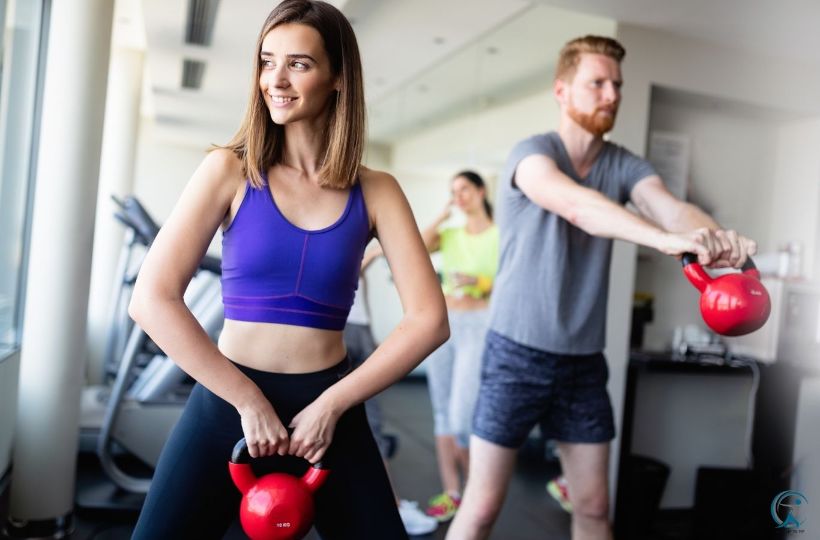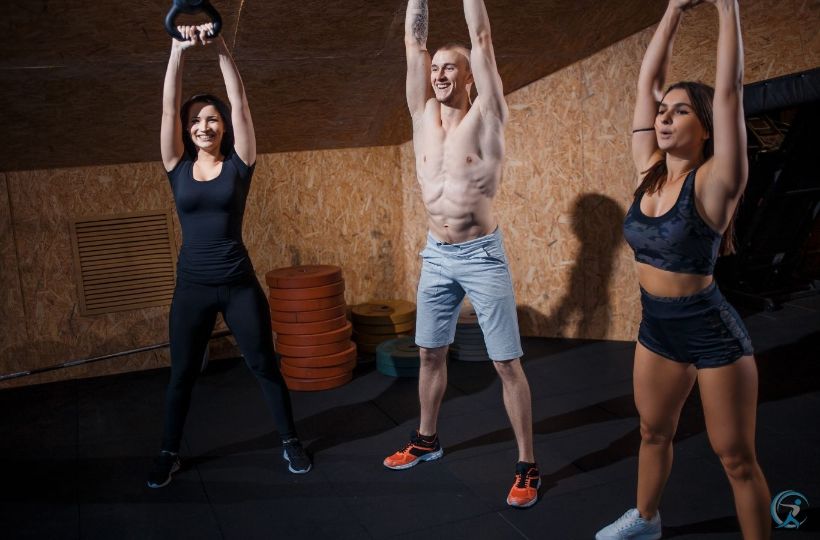Functional Fitness Training can help you transform your body. It is a type of training that emphasizes movement patterns over repetitions.
How can functional fitness training transform your body?
Functional fitness training (FFT) is an exercise that focuses on movements that simulate actual life activities such as walking or running. FFT has become very popular because it helps build strength and endurance without adding bulk.
Functional fitness training targets specific muscle groups and improves overall health. This form of training also improves cardiovascular function and reduces the risk of injury.
Functional training is not a fad

It’s been around for a long time. But it has recently become a buzzword in the fitness industry. For a good reason: functional training exercises train your muscles to work together and prepare them for daily tasks by simulating everyday movements you might do at home, at work, or in sports. While using various muscles in the upper and lower body simultaneously, functional fitness exercises also emphasize core stability.
Unlike bodybuilding-style routines or exercise machines that isolate specific muscle groups, functional fitness exercises generally involve multiple joints and muscle groups at one time. Bodybuilding focuses on individual muscles and muscle groups, emphasizing the mirror muscles – abs, biceps, pecs, and glutes – while functional training incorporates the entire body as a system with all muscles working together cohesively.
Functional fitness exercises require you to use many different muscle groups at once. These exercises mimic movements that you would naturally perform in real life. For example, when you pick something up off the floor, you perform a squat. Squatting is one of many functional exercises.
Functional fitness training can help you achieve better overall health and fitness
Functional fitness training can help you achieve better overall health and fitness. It focuses on using exercises that can help improve your everyday movement patterns, and it is an ideal option for people looking for a more challenging workout.
Experts say that functional fitness training improves your physical performances (such as strength, endurance, and balance) and helps improve movement skills like agility, coordination, and speed.
“Functional training is a trendy buzzword in the fitness industry,” says Mike Donavanik, CSCS and celebrity trainer in Los Angeles. “It’s the idea of doing exercises that promote the body to move naturally instead of just looking good.”
Donavanik says functional fitness training features a varied approach to exercise, using many different types of equipment to target multiple areas of the body at once. For example, he says exercises like walking lunges can help strengthen various body parts — including your legs, glutes, shoulders, and core — while also working on balance and coordination. The same goes for exercises like squats, deadlifts, and pushups.
Functional fitness exercises are designed to improve your ability to perform everyday activities
Functional fitness exercises are designed to improve your ability to perform everyday activities safely and efficiently. These exercises typically involve mimicking simple movements you might do at home, at work, or in sports. While using functional fitness exercises as part of a well-rounded exercise program can help keep you healthy, they may not offer the same benefits as more traditional types of strength training.
Many people believe that functional fitness exercises are essential for a well-rounded exercise program. Functional fitness exercises are believed to be effective because they imitate common daily activities like picking up objects, golfing, or mowing the lawn.
Some functional fitness exercises may help improve your balance and coordination, strengthen your core and increase overall flexibility. Participating in activities that engage various muscle groups, such as those around your hips, knees, and shoulders, can enhance your daily movement abilities.
However, suppose your exercise goal is to increase strength, improve endurance or enhance sports performance. In that case, you’ll likely need to participate in a more traditional exercise program that includes weightlifting and cardiovascular exercise.
Functional fitness can help improve your balance, coordination, strength, and flexibility

Functional fitness can help improve your balance, coordination, strength, and flexibility.
That’s a big reason why it’s so popular with older adults. But it can also benefit people of all ages and fitness levels, especially athletes.
Functional workouts use exercises that mimic the movements you make in everyday life, so they’re practical and relatable.
Functional training is a method of preparing your muscles for everyday activities by imitating common movements that you might perform at home, work, or in sports. By using equipment like kettlebells or dumbbells, you can improve your muscular strength, endurance, and cardiovascular fitness.
Practicing functional movements can help improve your balance, coordination, strength, and flexibility. That’s a big reason why it’s so popular with older adults. But it can also benefit people of all ages and fitness levels, especially athletes. Functional workouts use exercises that mimic the movements you make in everyday life, so they’re practical and relatable.
Functional fitness is a great way to prevent injuries and stay healthy as you age
You might not need to run a marathon or compete in an Ironman triathlon, but you do need to be able to move around with ease, especially as you get older.
That’s where functional fitness comes into play. Functional fitness is a type of exercise that focuses on improving your quality of life by increasing your strength and flexibility to perform everyday activities without a problem.
Movement is the key to functional fitness. Functional exercises are designed to improve the mobility needed for everyday tasks. These can range from lifting, squatting, pushing, pulling, twisting, and bending. Functional training aims to train your body to perform daily tasks with ease and prevent injuries from overuse or wear and tear.
Functional training requires using more than one muscle group at a time. It engages multiple joints, ligaments, and tendons at the same time. It strengthens your core muscles, the ones that make up your abdominal wall and lower back muscles because many functional exercises require you to use the abdominals and lower back muscles together to bend and twist.
The more functional exercise you incorporate into your lifestyle, the better health outcomes you’ll have throughout life because it will help you keep fit as you age.
Functional fitness is not just for athletes or people who are in good shape – it can be adapted to any level of fitness according to the American Council on Exercise.
It focuses on exercises that mimic everyday movement, such as lifting and carrying groceries or getting in and out of a car.
“Functional fitness is about exercises that have practical applications in your everyday life,” said Pete McCall, an exercise physiologist with the council. “It’s not about training to perform at the highest level possible.”
McCall said the most beneficial exercises work for multiple muscle groups at once and incorporate balance, stability, speed, and strength.
“The more muscles you can recruit at one time, the better,” he said. “It’s also important to focus on movements from different angles because we don’t move in straight lines.”
McCall recommends performing functional exercises without weights first so that you can perfect your form before adding resistance.
For example, a lunge exercise works the lower body and can be performed with or without added resistance. Make a lunge with proper form: Stand straight with your feet together. Take a wide step forward with one foot, keeping your toes pointed forward rather than out to the side. Keeping your back
Why You Should Be Doing it

Functional fitness has numerous benefits, improving strength, flexibility, balance, and endurance with a total body workout. You’ll be better prepared for day-to-day activities like lifting heavy objects and doing yard work. And best of all, you can do it anywhere! Try these exercises to get started:
Plank With Leg Lift: Start in a plank position with your hands directly beneath your shoulders and legs extended straight behind you. Engage your core as you lift one leg off the floor and hold for two seconds before returning it to the floor. Repeat for 10 reps on each side.
Squat With Lateral Raise: Stand with feet hip-width apart, holding a pair of dumbbells at your sides with palms facing in. Pulling from the middle back muscles, bend knees and lower into a squat as you raise the dumbbells out to the sides
Conclusion
With the help of functional fitness training, you can transform your own body. It will not happen overnight, but it will be rewarding and fun. If you have been on edge about giving functional fitness training a shot, take the plunge and start right away. You could not regret stepping outside your comfort zone to achieve this goal.
In conclusion, functional fitness training is a great way to build strength while boosting metabolism. And with so many benefits, it’s worth giving it a try!
As a veteran fitness technology innovator and the founder of GearUpToFit.com, Alex Papaioannou stands at the intersection of health science and artificial intelligence. With over a decade of specialized experience in digital wellness solutions, he’s transforming how people approach their fitness journey through data-driven methodologies.
